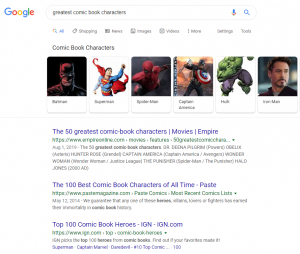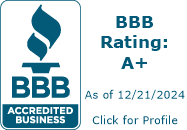Email marketing is a digital marketing strategy where your brand sends emails to a list of customers who’ve given you the address to their inbox. By utilizing email marketing, you can:
- Enhance the relationship between your brand and your customer base
- Build and encourage brand loyalty
- Promote events
- Retarget existing customers with special email-only deals
- Promote special occasions/holidays
Email marketing is less expensive than other channels and has a high ROI. Studies show that:
- For every $1 you spend, Email Marketing campaigns return an average of $38
- Email Marketing is 40x more effective at attracting new customers than social media
- Customers are 2x more likely to sign up for your email list as they are to interact with you on Facebook
- Emails with personalized subject lines are 26% more likely to be opened
- 53% of emails are opened on a mobile device
So, how do you get started with email marketing? It begins with lead magnet content.
Jump to a section:
- Building an Email List Using Lead Magnet Content
- Choosing an Email Marketing Platform
- Writing Your Emails
- Creating Segmented Email Lists
- Email Marketing Analytics
Building an Email List Using Lead Magnet Content
If you’ve never done email marketing before, chances are you haven’t collected a lot of emails. Hotels, SaaS companies, and E-commerce businesses will naturally collect large numbers of email addresses from their clients. Others, however, need to have ways to gather emails. How do you do this? With lead magnet content.
What is lead magnet content?
This is one of those beautifully named digital marketing tactics because it does exactly what the name implies. It’s content meant to attract leads.
- ebooks
- A cheat sheet of tips or resources
- White papers or case studies
- A webinar
- Free trials or samples
- A free quote or consultation
- Quizzes or a self-assessment
- A coupon
How do you create good lead magnet content?
- Make it easily consumable: Lead magnets are only effective when the audience uses them, so if you deliver a 300-page manifesto, you won’t gain traction
- Make it actionable: Lead magnets need to provide an actionable tool, skillset, or useful information that your audience can apply
- Make sure it provides value: People continue to buy products and services if they work well. Your lead magnet will become successful if it’s as valuable as your products and services
Make sure it’s relevant: If you’ve done your homework about your prospects, you’ll have no trouble coming up with a lead magnet subject that solves problems
Choosing an Email Marketing Platform
You can’t just send the emails from your Gmail account, or from your company handle. In order to stay compliant, you need an email marketing platform. These are some of the ones we’ve used in the past.
Mailchimp
If you’re just starting out with email marketing, we suggest you use Mailchimp. They’re constantly adding new features to their platform, connect to your social media accounts, and offer amazing customizable templates and subscription forms. Best of all, they have a free subscription tier so you can get started with a small list.
Constant Contact
Constant Contact, as their names implies, is fantastic when it comes to deliverability rate. Other than that, it’s pretty basic. Many companies use it, but there are better options that are not as expensive.
ActiveCampaign
Whew, ActiveCampaign is CLEAN! They have amazing automations, so you can set up autoresponders to help with onboarding emails and the like. The features can be a bit complex, so we recommend this when you’re ready to upgrade your email marketing platform.
Writing Your Emails
Your email copy is important. From your subject line to your offer to your body copy to your CTA, every word you use needs to be clear, concise, and drive subscribers to take an action. Here’s what you need to know about writing email marketing copy.
How do I write a subject line?
This is the first thing a recipient sees when an email arrives in their inbox.
- Keep it under 59 characters
- Use actionable language
- “Open to get your special discount code”
- “Download our free e-book”
- “Take 10% off when you book direct”
- Use urgency when appropriate in subject lines to create a need for readers to click through and convert
- “Deal ends soon”
- “Valid until September 30th”
- “Special code expires soon”
- “Flash sale”
- Personalize subject lines when possible
- Prioritize clarity over catchiness
How do I write email copy?
- Email copy should be clear, concise, and digestible
- You have a limited amount of time to hook your reader. Don’t waste it
- Focus on the benefits a reader will reap from the email
- Links should be frontloaded in email sends
- This enhances CTR. Links can be lost when placed below the fold
How do I write calls-to-action?
- CTAs should appear above the fold
- Make CTA unique and fun to entice click-throughs
How do I use images?
- Use high-quality images in email sends
- Low-quality images will cause readers to click out of an email, delete it, and unsubscribe. We want to prevent this from happening
What should my email cadence be?
Establish an email cadence for each type of send.
As needed sends
- Special offers
- Should have urgency embedded in their send plan:
- 2 sends for 3-day offers (at the start and Final Hours)
- 3 sends for 5-day offers (at the start, 3rd day, and Final Hours)
- Newsletter signups
- Personalized confirmation when a website visitor signs up for your newsletter
- Gated content downloads
- Personalized confirmation triggered when a website visitor submits their email to download a piece of gated content
- Free trial signups
- Personalized email triggered when someone signs up for a free trial
- Email opt-in confirmation
- Confirmation when a customer signs up to receive regular email correspondence
- Should have urgency embedded in their send plan:
With a cadence
- Monthly newsletter
- Once a month, at the end of the month
- Summary of content that was released over the month, with links to read full pieces
- Once a month, at the end of the month
Creating Segmented Email Lists
Once you’ve collected a large number of emails, you need to segment them into smaller lists. Why? Personalization. Creating segmented lists allows you to personalize the message, the offer, and the CTA of your campaigns so they provide full value to the subscriber who opens it.
How do I create segmented lists?
Here are some ways you could segment your list:
- Location
- City
- State
- Country
- Buying cycle stage
- Awareness
- Engagement
- Conversion
- Industry
- Financial tech
- Medical tech
- Ecommerce
- Previous engagement with your brand
- Language
- Job title
- CEO
- CMO
- Manager
- Associate
- Student
Email Marketing Analytics
Now that you have your email platform, your copy, and your segmented lists, it’s time to send your campaigns and monitor their performance. Here’s how you can track, improve, and report on your email marketing performance.
A/B test your email sends
Want to know what emails perform the best with your audience? You have to A/B test them.
Here’s the process we use for A/B testing our email sends:
- Only test one variable at a time
- Subject line
- CTA
- Images
- Then create two versions of the email
- One with the variable
- One without the variable
- Send out those two emails at the same time
- Check the results and continue using the best performing version
- Choose a new variable to test
- Repeat the above process
Monitor the high-level KPIs
There are four high-level KPIs you need to monitor to measure the efficacy of your email marketing:
- Deliverability – This KPI tells you the rate your emails reached your subscribers’ inboxes. If you have a low deliverability rate, keep the following in mind:
- Make sure you tailor your copy to avoid spam filters
- Cull inactive people from your regular list so you are only sending to active subscribers
- If you have a number of email addresses that bounced your send, cull them from your list
- Open rate – This KPI measures the percentage of your subscribers who open your email when it reaches their inbox. If you see that your open rates are low, keep the following in mind:
- Test different subject lines to see what entices your subscribers to open your email
- Test different send times to see if you can maximize your opens that way. You might be sending your email at a time when your subscribers are flooded with other sends
- Clickthrough rate (CTR) – This KPI measures the percentage of people that click on your CTAs. If you find that your CTR is low, keep the following in mind:
- Make sure the offer you send provides true value to the segment you’re sending it to
- Test your email copy to make sure it is concise and provides a clear action for your subscriber to follow
- Test other CTAs
- Unsubscribes – This KPI tells you the number of people who opt out of your email subscriber list. If your unsubscribe rate is high, keep the following in mind:
- Make sure your email is personalized
- Make sure you provide value for the subscriber and their segmented list
Set up proper reporting
If you have to report on the success of your email marketing campaigns, you need to set up proper reporting. We’ve created a sample email reporting worksheet that tracks the following:
- Number of Emails Sent
- Number of Emails Delivered
- Deliverability Rate
- Bounce Rate
- Open Rate
- Clickthrough Rate
- Unsubscribe Rate
- Subject Line
- Email Body Length
- Offer/Deal
- CTA
- List Segment
You’re now ready to start, test, and report on your email marketing campaigns. Remember, iteration is important when it comes to email marketing. What works for one company won’t work for another. Keep testing your subject lines, your offers, and your CTAs to help produce the highest ROI you can.
Happy emailing!










